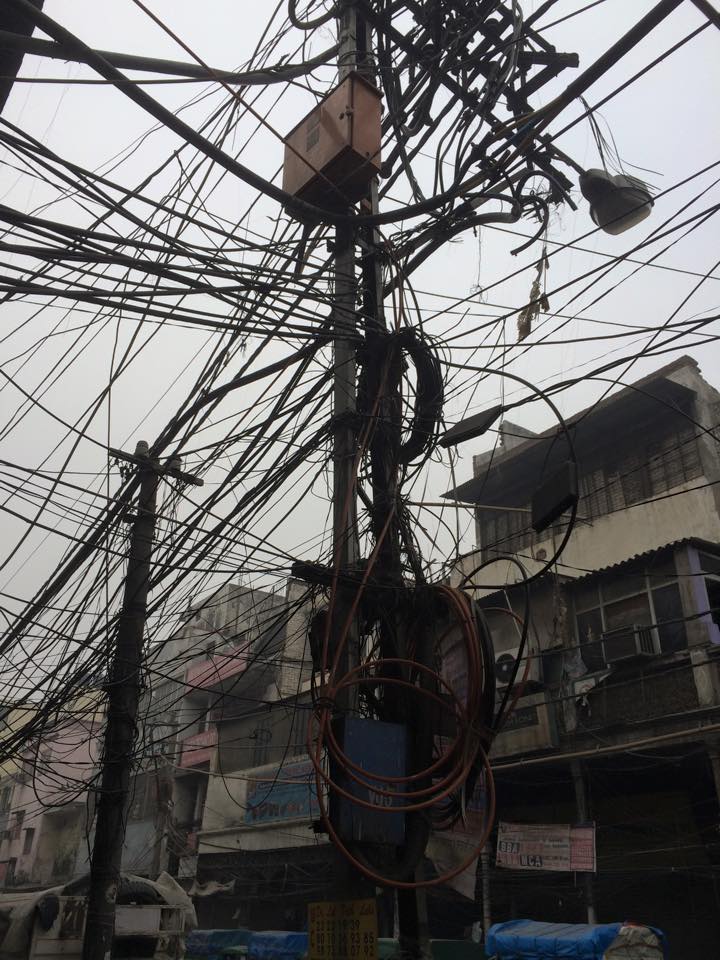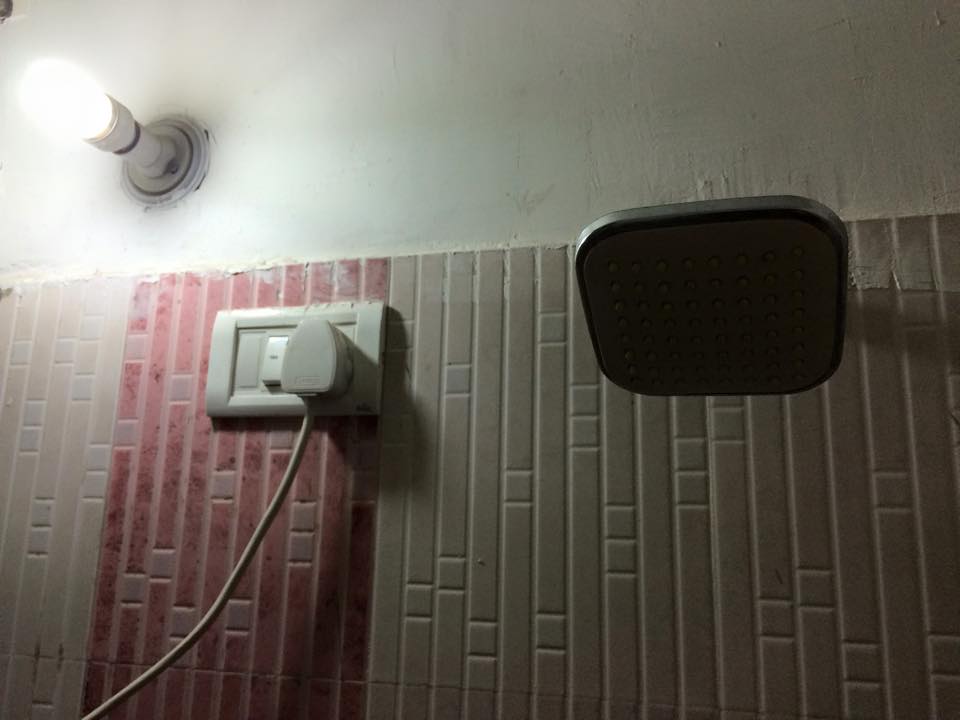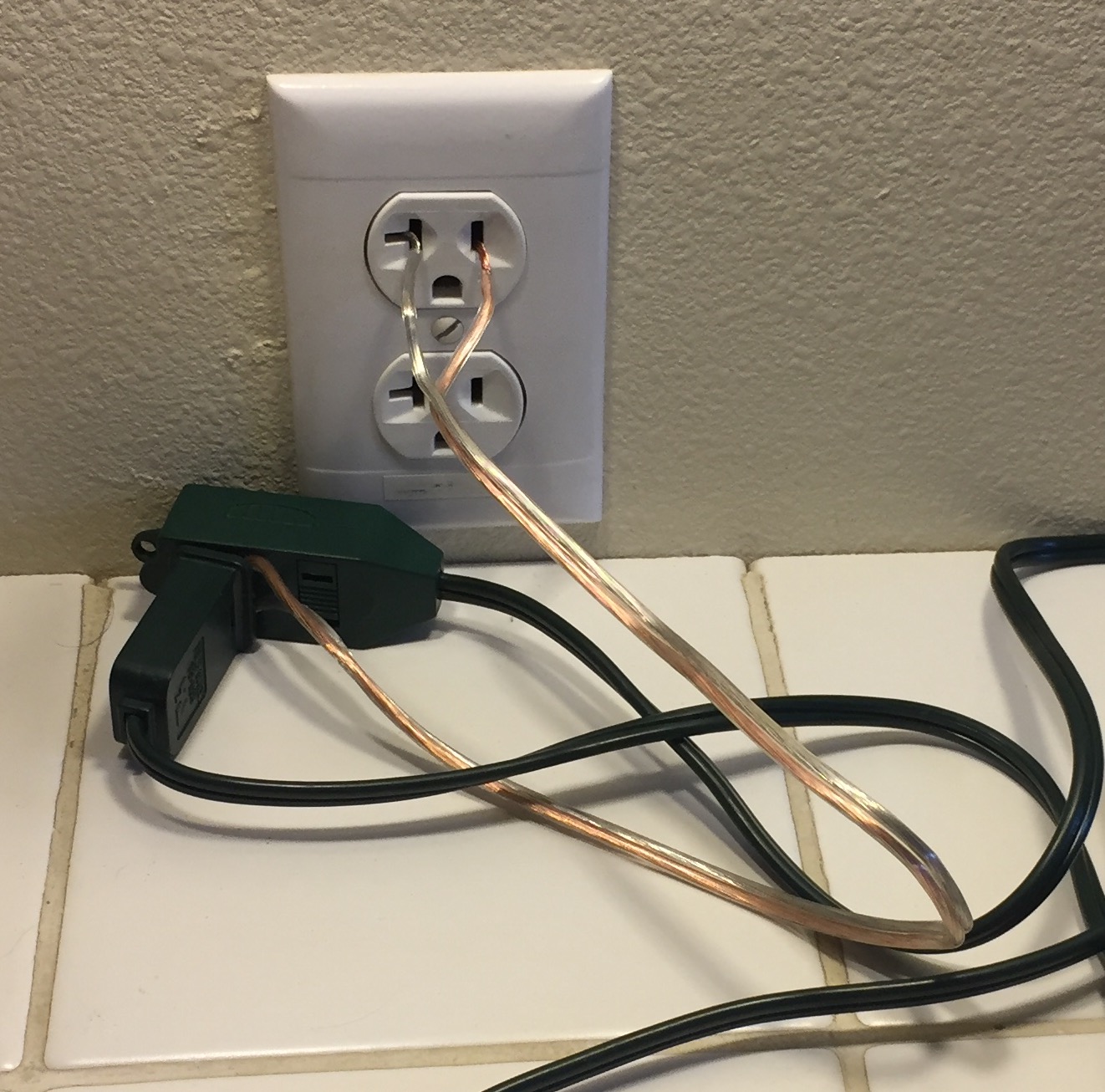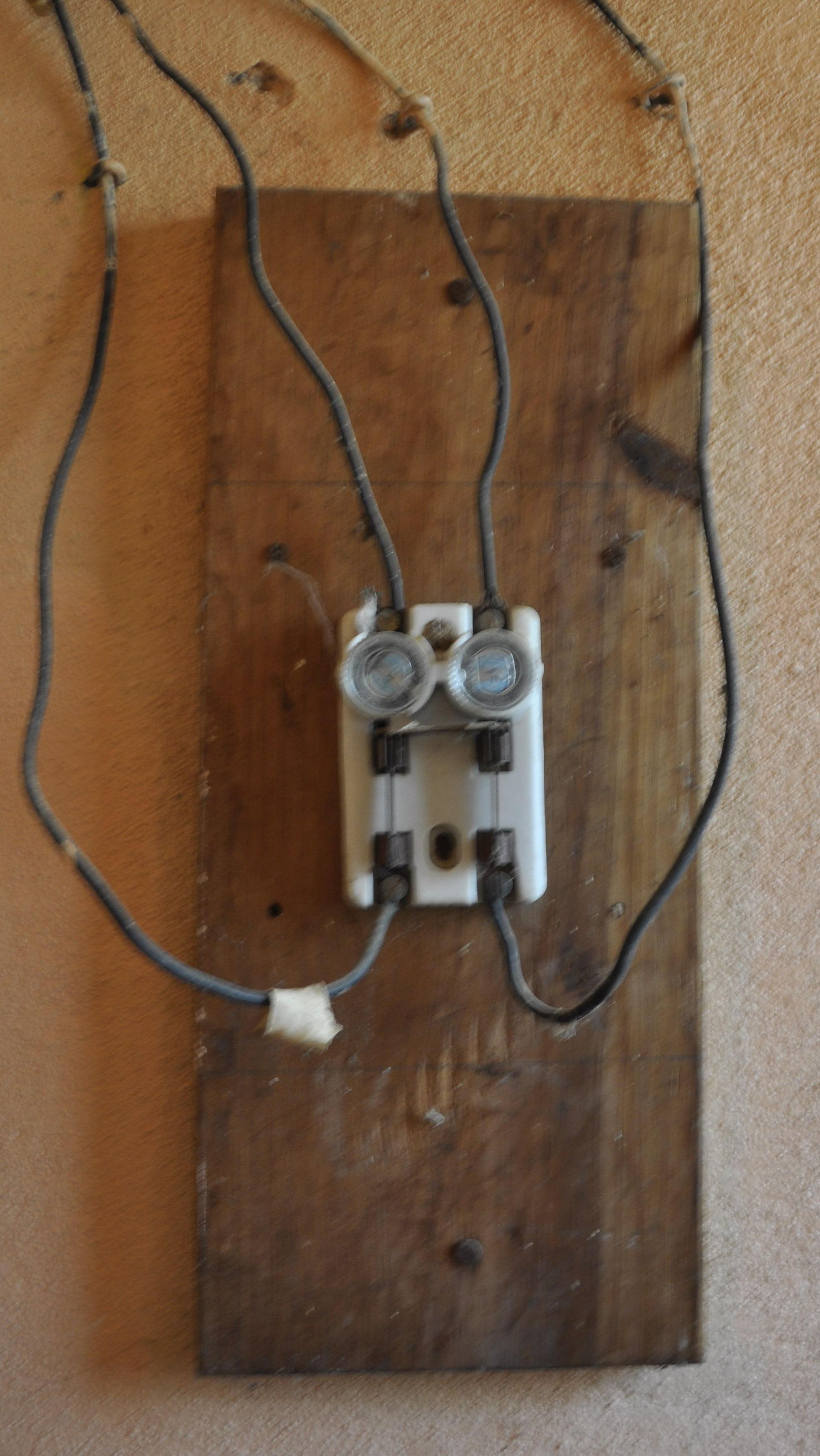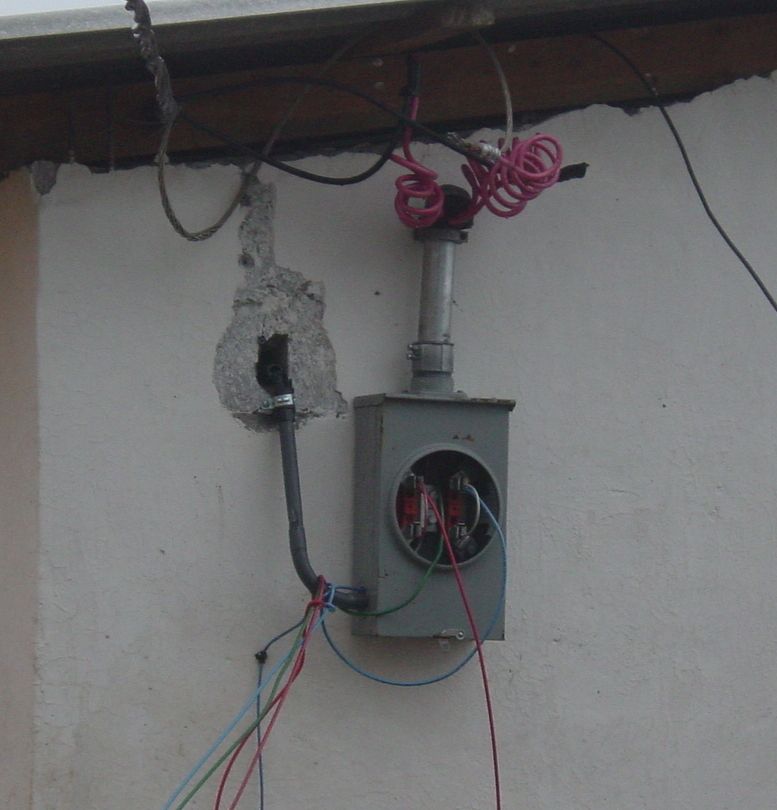Topic
Charging Battery Packs Overseas (Gotta Love Engineers!)
Forum Posting
A Membership is required to post in the forums. Login or become a member to post in the member forums!
Home › Forums › Gear Forums › Gear (General) › Charging Battery Packs Overseas (Gotta Love Engineers!)
- This topic has 31 replies, 14 voices, and was last updated 7 years, 10 months ago by
 BlackHatGuy.
BlackHatGuy.
-
AuthorPosts
-
Apr 23, 2017 at 11:01 am #3464511
Thank god for BPL’s resident engineers — I’m sure you can help an electrical ignoramus like me!
I’m heading off to trek in Peru soon (220v electricity), and I want to bring an Anchor Powercore 10000 external battery pack. Once I have depleted it and want to recharge it, can I simply plug it into a wall socket via a USB plug & cable (like I can do with my iPhone)? Or do I need a converter?
BTW, I asked this question directly to Anker, but they could not understand what I wanted, and would not answer “yes, you can plug it in” or “no, you will need to convert the wall outlet’s power to 110v before plugging it in”! They just repeated what is written in tiny print on the bottom of the Powercore (“5V = 2A Output: 5V = 2.4A”), which is gobbledegook to me.
Thanks in advance!
Apr 23, 2017 at 11:45 am #3464518Essentially all chargers are now multi-voltage (110-240 VAC) and multifrequency (50-60 Hertz). So if you can get the line-voltage plug to physically fit, you’re fine.
I like carrying a multi-outlet extension cord as is sold at Christmas for Xmas tree lights. Then a single adaptor creates many US-style plugs into which to plug chargers and stuff. And sometimes the outlet isn’t where you want it. And in a bus station or airport, when all the outlets are full you can create more outlets for yourself (or others).
There’s a trick I use to not even need an adaptor, but it needs a photo to explain it. Maybe later today.
Apr 23, 2017 at 11:50 am #3464519Valerie, I’m no engineer, but sometimes I pretend that I am. My suggestion is to take along a 110 v converter, just in case. During my frequent forays into the 3rd, 4th, and 5th world places (as they were called then), I would occasionally fry some 110 V electronic device using the 220 V outlet in my room without thinking. I’m not sure how USB works (they didn’t exist then), but I’m rather certain that you don’t want to take any chances with your devices.
David Thomas will check in when he gets home from church, I expect.
Apr 23, 2017 at 12:11 pm #3464523There two requirements for using power overseas
- Outlet adapter – this allows you to “plug” into various plug configurations and use your US plug
- Power Converter – converts 200-220 to 100-110
Some places sell just adapters and some just converters.
If you travel a lot, I would get an integrated system (as in one piece) so you don’t have all of the little bits to carry around. I have one that is integrated and has 2 USB port as well.
Apr 23, 2017 at 3:29 pm #3464547You’re getting some misleading information here. Look on whatever plug-in device gives you a USB outlet. Look at the really small print molded into the plastic or on a little sticker. For instance, the one nearest my keyboard says:
“INPUT: AC100-240V, 50/60Hz 0.15A” meaning you can plug it in anywhere in the world.
If it has a wide range (100-240V, 110-230V) on the input voltage, it is a “switching power supply” and you don’t need a voltage convertor. Back when “wall warts” were heavy little transformers, they only worked on one voltage and you needed a voltage convertor when traveling beyond North America. Now, they are (small, light) solid-state electronics and automatically adjust to whatever line voltage you plug them into.
Every single cell-phone charger, camera-battery charger, USB ports from line voltage, ebook charger, and almost all laptop/netbook chargers I’ve seen in the last 15 years have been switching power supplies that don’t need voltage convertors.
But snap a pic of the label on your USB port and post that if you want. Like this:
 Apr 23, 2017 at 3:31 pm #3464548
Apr 23, 2017 at 3:31 pm #3464548I’m not an engineer but I’ll share my experience here, including my visit in Lima and other locations that use 220v.
When I lived in Germany in the early 1990s, I owned a 220v to 110v converter because some of the devices I owned then like my TV weren’t dual voltage and plugging them into the wall would’ve fried them. Now when I travel, all of my electronics are either charged with a micro USB or lighting cable which simplifies things.
In my experience, regardless if the receptacle is delivering 110v or 220v, the USB wall plug will deliver 5v to the device. The problem that some of these locations are prone to surges and scheduled/unscheduled blackouts. Most of the hotels I stayed in when I was traveling through India were less than $12 per night, so the generator they would fire up during the blackouts were most definitely older than me, and in extreme cases, older than Doug. The least of my concerns were whether or not it was modified vs pure sine wave, and more if it was going to explode and take out the hotel.
Regardless if it’s 110/220v I recharge my batteries off of the wall and recharge my devices off of the batteries. For my Sony A6000 which does not come with a battery charger and can be plugged directly into the wall, I bring a third party battery charger so my camera is protected from any power surges or other voodoo some of these grids/generators may subject my camera to. For my iPhone, I bring a 13,000 mah Anker battery pack that I keep topped off and charge my phone off of the battery pack.
I figure I’d rather be out a $30 battery pack than a $500 camera or $1000 phone, which sounds like may be your approach as well.
I don’t bring any 110v devices (e.g. hairdryer) but for folks that need something like that, they are easy enough to find a dual voltage version here in the states or in country for not a lot of money.
As far as adapters go that will allow you to plug a type B plug into a type C receptacle, I don’t have one in particular that I can recommend as my last one kept launching itself from the receptacle and across the room ($12 hotel so not all that far really) due to some malfunctioning spring inside of it.
One great suggestion I received on my last trip that I plan on implementing moving forward is to bring a multi plug. This helps out when waiting in train stations and airports and 15 people are trying to use the same receptacle. This give you an opportunity to share it with other people. Before anyone voices concerns over overloading the receptacle, I was given this idea in a country where there were exposed wires in my shower going to the electrical water heater, that was also in my shower, so this was the least of my concerns. Again, $12 hotel.
Apr 23, 2017 at 3:47 pm #3464549Power surges is another issue that’s long over. Transformer power supplies have an spike in their output if they have a spike on their input (from lighting, crossed wires elsewhere, power surges when the grid comes back on, etc). Switching power supplies are adjusting themselves continuously and are quite good both maintaining full output voltage during brownouts and at not exceeding their output voltages should their input spike.
Apple IIs from the 1970s (and all Apples since) (1) weathered brownouts just fine, (2) never fried chips due to passing line voltage spikes and (3) weighed less (because they lacked the transformer’s iron plates) than a comparable Radio Shack Trash-80.
Things I have plugged in without a voltage convertor: Chargers for Nokia cell phones, iPhones 2, 3, 4, 5, 6, and 7, various Nanos, iPads, iPods, eBooks, Nikon battery chargers, Lumix camera battery charger, Anker and off-brand battery packs, HP laptops, Mac Air laptop, Dell laptop, AA battery chargers. Places I have plugged them in: remote generators on camping trips, inverters in cars and boats, China, Costa Rica, Mexico, New Zealand, Italy, Switzerland, Germany, England, France, Spain, Iceland, Zimbabwe, and Cuba (last week).
Switching power supplies really are a big improvement over transformers and make travel easier, with fewer worries, and less equipment.
Apr 23, 2017 at 4:28 pm #3464551If you plug your USB devices directly into the wall, you’ll likely be fine. My process offers a higher level of protection because the high dollar devices never come in direct contact with the grid.
This was taken in India but I’ve seen this throughout the world. In Brazil, some structures in the favelas will quite literally be erected overnight and they will illegally tap in to the grid. Also, my description of some of the vintage generators was not an exaggeration. I’ve no way of knowing when they were built but they looked like relics. Added for clarity, I’m not talking about portable generators but the kind that you’ll find at hospitals, except really really old and sketchy looking.
For me personally, regardless if my concerns are founded or unfounded, my process works well and mitigates risk with almost no inconvenience.
Again, this is India but I have a similar picture from when I was in the Philippines earlier this year.

I couldn’t find the pictures of my exposed spliced wires but outlets in the showers are fairly common as often times that’s where the water heater is. Doesn’t seem to be a real problem but coming from the US, it earns a double-take.

Off topic, if you upgrade from the $7 to the $12 hotel room, you get a complementary floor bandaid.

Also, if you ever go to India, if you haven’t already, befriend Tom so he can hook you up on the must-dos in Jaipur, including this gem.

Since we’re whipping out our… passports… excluding transit countries and just listing places where I’ve at the very least overnighted and in some case visited multiple times or lived in for several to 24 months: Germany, Austria, Netherlands, France, Norway, Sweden, Denmark, England, Hungary, Czech, Slovakia, Bosnia, Serbia, Croatia, Cambodia, Philippines (my most recent), Brazil, El Salvador, Mexico, Panama, Pakistan, India, and New Jersey.
Edit: Almost forgot my favorite mayonnaise on fries country, Canada. ;)
Edity edit: I also forgot Peru, which I believe is one of the South American countries that uses both 110 and 220v depending on what region you’re in. It’s been several years and I don’t remember.
Edity edity edit: I should mention that I’ve never witnessed or known anyone who’s had a device damaged due to a spike/surge, but several who tried to plug a 110v only device into a 220v receptacle. My concerns are mostly a result of living or traveling through areas where what you see of the grid does not inspire confidence and the possibility of a short circuit immediately in front of or in the hotel seems reasonably possible, including being down the hall from a panel that started arcing as a result of a DIY project gone wrong by a maintenance guy who was in over his head. Fortunately only the panel was damaged and nothing that was plugged in downstream suffered.
Apr 23, 2017 at 4:30 pm #3464552As David says, read the label.
The only thing I can add is to avoid the very cheapest of convertors. Good convertors use transistors which have a generous margin of safety, to handle those pesky voltage spikes. Naturally, the higher-rated devices are slightly more expensive.
Of course, the next question is how to tell the good from the bad. As a very rough rule, convertors from brand names should be a bit more reliable – if only because the brand names are concerned about their image and the cost of returns. The fly-by-nights don’t care.Cheers
Apr 23, 2017 at 4:33 pm #3464553Shoot. Now that I have seen the whipped out..passports….I am only peeking in to say I am staying out.
Apr 23, 2017 at 4:35 pm #3464554SHOOT I FORGOT SWITZERLAND!!!!!
Just for the record, I’m waiting for an invitation to attend the first ever Swiss GGG so I can revisit!
Apr 23, 2017 at 6:40 pm #3464573Apr 23, 2017 at 7:28 pm #3464579Switching power supplies are getting to be quite common, but you do have to look at the label. Even with a switching power supply, you still have the physical plug conversion to deal with. Not all plugs are the same shape (particularly 200-220 outlets).
Apr 23, 2017 at 11:17 pm #3464597Office Depot currently has the Belkin Global Travel Kit for 10 bucks. Is probably all you’d need that you don’t already have.
Apr 24, 2017 at 10:01 am #3464637BIG THANKS to all the engineers, and to those who geek out with them! Who knew this would turn out to be such an entertaining thread?!
I have traveled before to non-first-world countries, and understand the basics of plug shapes (so many!), plug adapters (have a bunch in my travel drawer), and differing voltage in different countries.
That said, much of that travel was before I had become so dependent on cell phones and tablets — and would simply leave them at home! Now, I have apps for Spanish translation, apps that will guide me around Machu Picchu and Cusco, etc.
I Anker’s Powercore had the “usual” stuff printed on it (INPUT: AC100-240V, 50/60Hz 0.15A), I wouldn’t have needed to ask the question. But it doesn’t have ANYTHING about AC power on it — just about input/output at 5v… maybe they should add some AC info.
One final question (nothing to do with travel, but has to do with electrical devices):
Why are iPhones so finicky when you try to charge them on-trail via solar chargers? I had to bring a small “lipstick” battery that I hooked up to my Suntactics 5, then use that to charge my iPhone. It sure would be nice not to have to carry that extra weight…
@discopants – Ian, you figured correctly that I wanted to charge the Anker, then use it to charge everything else because risking a $30 battery is better than risking a $900 iPad! Loved those photos — how considerate of the hotel to provide a free bandaid, in case you slipped in the shower! ;^)
@davidinkenai — Thanks, David, for being ever-helpful! I really appreciate your kindness, which is apparent to any/everyone on BPL. I will definitely take your advice to bring a small powerstrip as well, if only for inconveniently-located outlets in small hotels/guesthouses.Apr 24, 2017 at 11:07 am #3464645Valerie, I’m not a software engineer, not a real engineer, but I can answer a few of your questions:
- An Anker battery pack, like any battery pack that charges via USB, only charges via DC (5V, except for some USB Type C chargers), so that’s why you won’t find anything about DC. So it’s not the battery pack that you have to match to the local current and plug, but the wall charger you connect to the battery pack. That’s where the talk of switch supplies and adapters is relevant: with the right wall charger and/or adapter, you can charge any USB battery pack, anywhere.
- The iPhone needs some minimum amount of 5V DC current to charge. If the solar panel can’t deliver that, the iPhone won’t charge. And when the phone switches from charging to not charging (such as when a shadow is cast on the solar panel), or vice versa, the screen turns on momentarily. This can drain your phone battery faster than the solar charger can charge it, so if you’re not getting consistent sun, having the phone plugged in can do more harm than good.If you did want to charge your phone without bringing a battery pack, you could do one of two things: Turn your phone completely off (not just locked/sleep-mode), or only charge when you’re stopped and have full sun with little or no clouds.
Apr 24, 2017 at 2:47 pm #3464667Yeah, what Jim said about the battery pack. Sorry, I missed that your (Valerie’s) focus was on the battery pack ITSELF. The battery pack only needs need to be connected to a USB charger. These larger battery packs take a while to charge, so you want a higher-capacity USB outlet, with 2 or more amps of DC output.
It’s the bit you plug into the wall that powers that USB port that has to be the correct AC voltage. Which they are all. Because they are all switching power supplies and function over the entire range of household line voltages and frequency found on Planet Earth.
Also, Jim’s right about the iPhones which are really annoying to recharge on an intermittent source like a solar panel (or my wood-fired USB port).
I’ve got the bits to assembly a hydro-powered USB port. In case you find yourself next to a water spigot with a dead phone.
And my list of countries? It wasn’t to show “my passport is bigger than yours” – I’m really much better traveled domestically than internationally. It was to say that switching power supplies (with no voltage converters) have worked for me on every continent and every household electrical voltage / frequency there is. If someone has a counter example of a switching power supply that failed them in a foreign country, I’d like to hear about it. But frying something with a transformer power supply or a direct AC appliance years ago isn’t relevant data to Valerie’s query.
Apr 24, 2017 at 2:53 pm #3464671Here’s what I travel with around the USA and around the world:

It’s a 9-foot extension cord with 9 outlets and a switch on it. They are sold, especially in December, to plug all your Xmas lights into, for about $8 at Home Depot, etc. It weighs 7 ounces / 200 grams. I use it to:
1) get power where I want it, when the outlet in a hotel room is behind the bed or across the room2) get power when someone else has camped on all the airport power ports – I ask if I can unplug/replug them in to my extension cord and no one has ever said “no”. From one outlet, I create 9, their device uses one of those, so I still have 8 outlets.
3) and with that short length of speaker wire, I can tap into any outlet style, anywhere.

First, I insert one gold and one silver wire into one of cord’s female receptacles, and jam those wire ends in place with my cord’s male plug (the dark-green plug plugged into the dark-green receptacle above). Then I place one each of the wires into a wall receptacle (above, unsecured) and secure it with a local lamp cord, TV cord, fan cord, etc. In the photo below, I’m using a USB outlet as that plug.

Sure, it’s a little easier to carry an adaptor for the country you’re going to, and I recommend you do that. But if you leave one behind, or it is a loose fit and keeps falling out, or you go to the next country with a different style plug, you can always use this trick.
The beauty of the 9-outlet power cord is that you only need ONE physical converter from foreign-style to USA-style (or that little bit of wire) and then you have 8 or 9 USA-style outlets which your SWITCHING POWER SUPPLY* devices can plug directly into.
And, no, it doesn’t matter which wire (gold or silver) is power and which is neutral. Your battery charger, laptop power supply, USB port will work fine either way. Some appliances and power tools may be a little less safe if you invert the wires and jump in the bathtub with them, so don’t do that.
* SAFETY NOTE: This does not change the voltage from 220-VAC to 110-VAC. It only lets you physically connect more devices. So you can’t plug in a hair dryer (unless it is switchable, many are, and you’ve switched it), nor a USA power tool, nor a USA lamp, nor a USA immersion heater, coffee maker, hot plate, blah, blah, blah. Only switching power supplies that say “INPUT: 100-250 VAC”.
Apr 24, 2017 at 4:04 pm #3464688In the interests of protecting BPL, and to a lesser extent you the reader, I must point out that what David has illustrated can be extremely dangerous if you are not VERY VERY careful. You are handling wires with exposed copper and which are connected directly to the mains. ‘The Authorities’ would have a fit!
This may be a bit less dangerous with 110 VAC (USA) than with 240 VAC (rest of world), but it is still an invitation to electrocution. Do not touch any of the copper!
Be careful!
CheersApr 24, 2017 at 4:54 pm #3464696Dave’s system is “code” in most of the 3rd world. The knife switch is in a grade school classroom about 5 feet off the floor. When I asked the local physician if he had a lot of electrocutions, he said “No, our electricity is not strong enough to kill anyone.”

 Apr 24, 2017 at 5:05 pm #3464702
Apr 24, 2017 at 5:05 pm #3464702Sheesh!
OK, I am a bit hardline when it comes to electrical safety. I have been thrown once or twice, and it was not nice. Especially as the gear had been assembled, over my objections, by the resident unlicensed electrician. Yes, UNlicensed.That knife switch: I have a couple of those. I had one on the main door into my research lab when I worked for the government, with a suitable warning label. It was duly reported to the Safety Committee and the chairman of the c’tee came around to inspect. Fortunately he had enough common sense to find me and ASK me about it. Yes, it was on the door, and yes it had wires going to it. But the wires just went into a hole in the door and ended there. The chairman was amused by that, and also by my explanation that it was a sort of warning to visitors to NOT meddle.
Cheers
Apr 24, 2017 at 5:29 pm #3464709Personally, I’ll leave the “naked wire” solutions to you grown-ups. I’d rather eat the bandaid from Ian’s Indian shower than try rigging up what David showed, LOL. Less dangerous to me, anyway!
Apr 24, 2017 at 5:30 pm #3464710I worked with a guy who wired 110-VAC bare-handed and only turned the breakers off for 230-VAC. The same guy recommended, if you fall from the roof, to do so in Spring, not Winter, because mud is softer than ice (he spoke from experience in both seasons).
Yeah, don’t touch the bare metal bits if any of it is plugged in.
Don’t touch your stove burner while it is running.
Grip the handle-end, not the blade-end, of your knife.
While condoms can be stretched to fit over your head, don’t do it for long.
Everclear 151- and 190-proof are both a fuel and a beverage. No other backpacking fuels should be drunk (although someone should develop an olive-oil stove).
Apr 24, 2017 at 5:53 pm #3464724Sorry David didn’t mean to hurt your feelings.
Valerie,
My guess is that if you ate the bandaid, you’d either be the source of the zombie apocalypse or the lone survivor due to your bolstered immune system.
My apologies if I missed it but are you hiking the Inca Trail? If so, I’d love to read a report when you’re done. I’m not big on having other folks carry my bags but my understanding is that’s the requirement. I think there’s a trip report here on BPL somewhere where the hiker had his camera stolen but the thief was nice enough to let him keep the SD card.
I really enjoyed my time in Lima and had an opportunity to visit an Incan ruin outside of town. If you have the time, it’s worth visiting, but obviously pales in comparison to Machu Pichu. Unfortunately all of the things I want to visit in country are spread out so I’ll budget a couple weeks next time around so I can fit it all in.
You’ve likely tripped upon this information on your own but Lima is a foodie’s paradise. From what I observed and read, you could spend a lifetime there and not fit it all in. For our last dinner in country, we ate at that restaurant that’s at the end of a fairly long pier (nearly impossible to miss). Unless something has changed, it had great/fresh seafood.
Safe travels and have fun!
Apr 24, 2017 at 6:02 pm #3464725I Anker’s Powercore had the “usual” stuff printed on it (INPUT: AC100-240V, 50/60Hz 0.15A)
Valerie, you answered your own question. Input “AC 100-240V 50/60Hz”. This pretty much defines the power supply across the entire world. AC = alternating current, 100 to 240 volts and frequency of 50 or 60 Hz. It is good to go. It will work anywhere with an appropriate adapter plug or highly insulative gloves.
You should also find something like Output: DC 5V ?A where ? is somewhere between 0.5 (500mA) to about 3 or 4. This is the USB output.
-
AuthorPosts
- You must be logged in to reply to this topic.
Forum Posting
A Membership is required to post in the forums. Login or become a member to post in the member forums!
Trail Days Online! 2025 is this week:
Thursday, February 27 through Saturday, March 1 - Registration is Free.
Our Community Posts are Moderated
Backpacking Light community posts are moderated and here to foster helpful and positive discussions about lightweight backpacking. Please be mindful of our values and boundaries and review our Community Guidelines prior to posting.
Get the Newsletter
Gear Research & Discovery Tools
- Browse our curated Gear Shop
- See the latest Gear Deals and Sales
- Our Recommendations
- Search for Gear on Sale with the Gear Finder
- Used Gear Swap
- Member Gear Reviews and BPL Gear Review Articles
- Browse by Gear Type or Brand.


